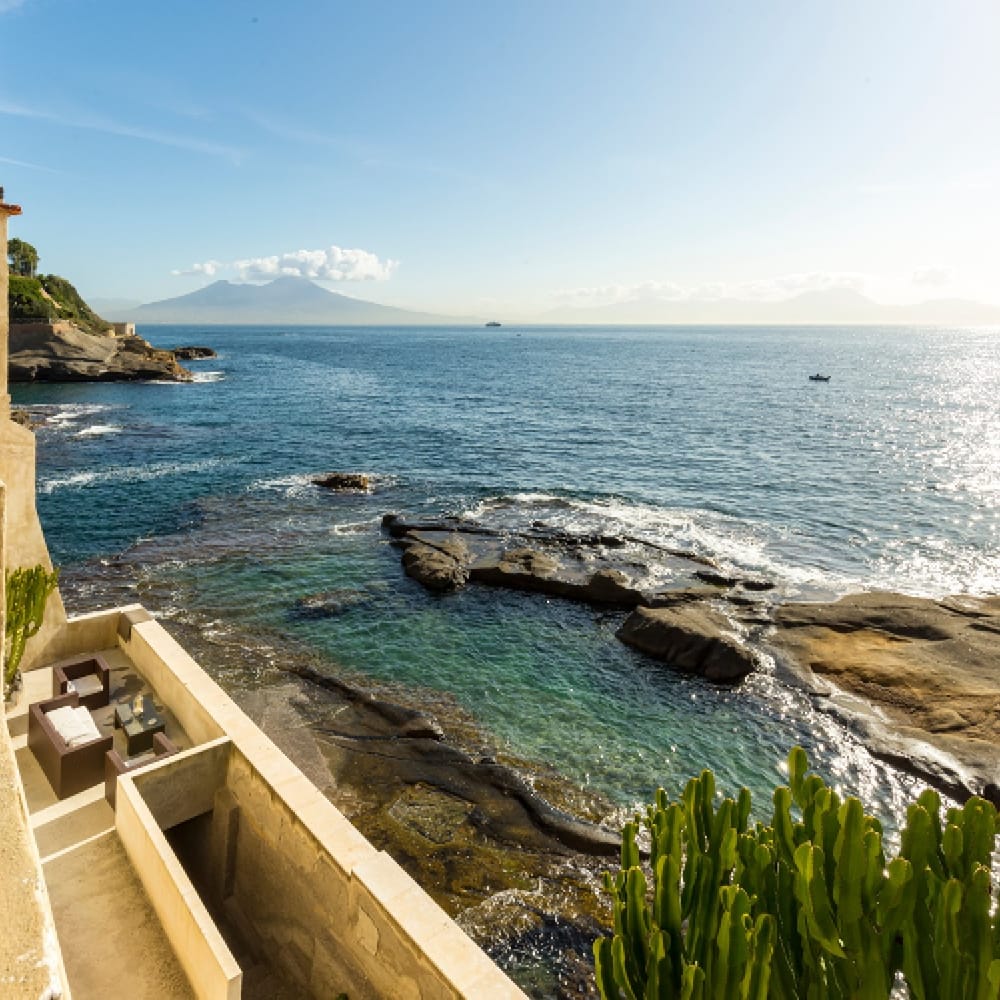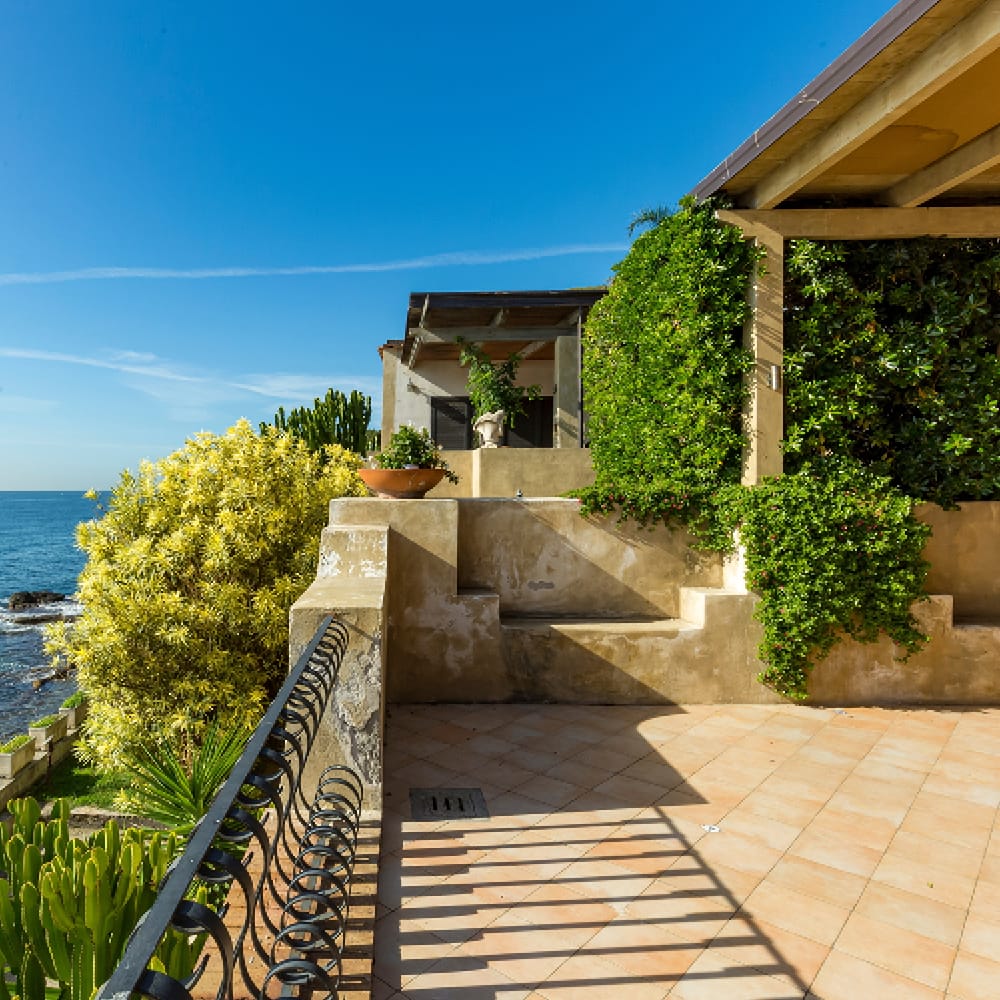This Villa is found along the descent to the village of Marechiaro, an inexhaustible source of poetic and evocative inspiration, the mirage of a majestic oasis of pure tranquility and beauty.
In ancient times the village, which developed around via Marechiaro, took its name from the church of Santa Maria del Faro. The name Marechiaro does not derive, as is commonly thought, from the transparency of the waters of the Posillipo sea, but from their stillness. Some documents from the Kingdom of Sicily mention “mare planum”, translated into Neapolitan “mare chianu”, from which derives today’s “Marechiaro”.
In the 1960s Marechiaro was one of the symbols of the dolce vita in Italy, becoming famous for its Hollywood visitors and its typical restaurants overlooking the splendid panorama of the gulf, and for the characteristic “Scoglione”. From Marechiaro you can also admire the panoramic view of the entire city of Naples, Mount Vesuvius, as well as the Sorrentine Peninsula and the island of Capri, which appears exactly in front of the typical small beach there.
The view from the stairs of Marechiaro, with its famous “Scuglione ‘e Marechiare” (Big rock of Marechiaro), and what has contributed most to the mythicisation of this corner of paradise, is the so-called Fenestella (in Italian, “little window”). Legend has it that the Neapolitan poet and writer Salvatore Di Giacomo, seeing a small window on whose sill there was a carnation, had the inspiration for one of the most famous Neapolitan songs: “Marechiare”. Today the window still exists and on the windowsill there is always a fresh carnation as well as a commemorative plaque in white marble engraved with some notes from the score of the song and the names of its authors
The Archives of Neapolitan Songs testifies to the existence of almost two hundred classical songs dedicated to this small area of Posillipo, or which mention it, as well as a large number of poems.
Read more details by clicking here.



